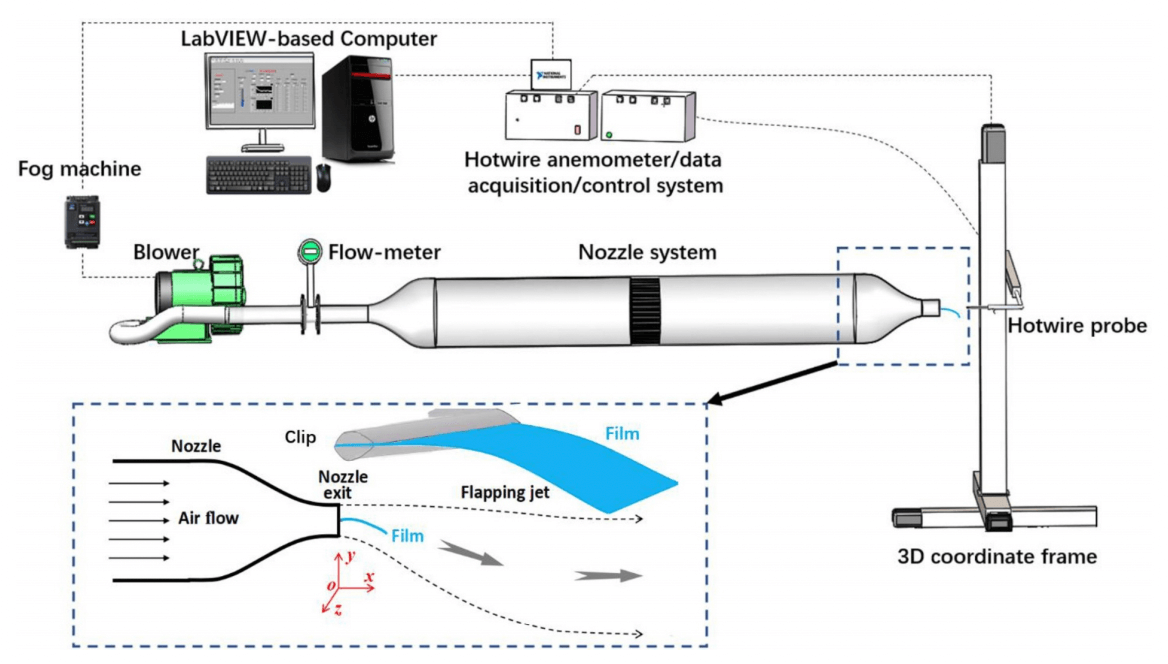Abstract
We have recently discovered a new type of self-excited flapping jets due to a flexible film whose leading edge is fixed at the nozzle exit [Exp Ther Fluid Sci, 106, 226-233]. This paper is to report the experimental investigation on mixing characteristics of the jet induced by a rectangular FEP film. Hot wire anemometry and flow visualization are used to examine the flapping jet flow versus the non-flapping counterpart. Experiments are conducted under the following conditions: i.e., L/D = 1.0 (fixed), W/D = 0.03 ~ 1.0 (varying) and Re = 10000 ~ 45000 (varying); where W and L are the film's width and length, D is the nozzle-exit diameter, and Re is the Reynolds number defined by Re triple bond UoD/ν with Uo and ν being the jet-exit velocity and fluid viscosity.
It is found that the jet-flapping frequency fF varies with W in a complex fashion while it grows roughly linearly with increasing Uo for W/D ≥ 0.5. The flapping Strouhal number StF triple bond fFD/Uo ranges in 0.13 ≤ StF ≤ 0.23 for Re = 15,000 ~ 45,000. These Strouhal numbers are substantially lower than that (≈ 0.45 ~ 0.7) for the primary vortex generation in the free jet, but one to two orders of magnitude higher than those from the conventional self-exciting fluidic devices. In general, the flapping jet decays and spreads more rapidly than does the free jet. As W increases, the decaying and spreading rates both grow. Of significance, the centerline evolutions of Taylor and Kolmogorov scales versus the integral scale are examined to characterize the small scales of turbulence against the large-scale motion.

